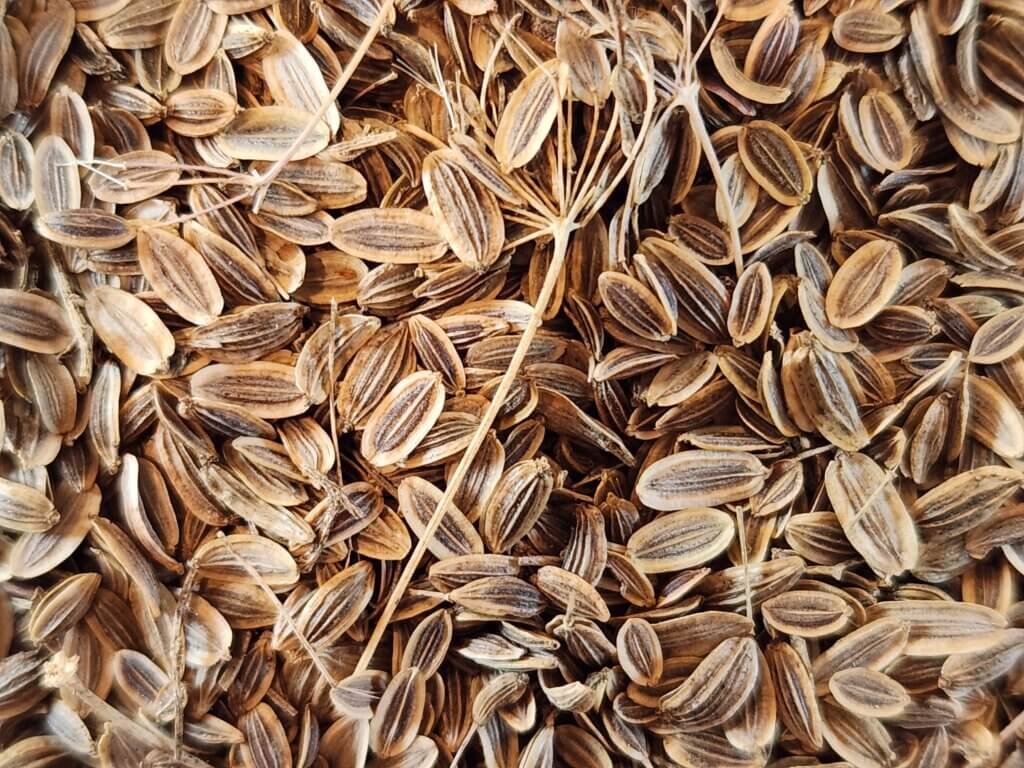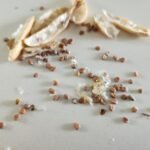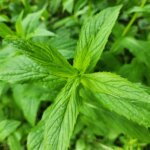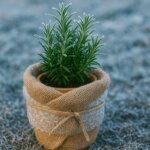Dill is one of those versatile herbs that belongs in every garden. Not only does it add a fresh, tangy flavor to pickles, salads, and fish dishes, but dill also attracts pollinators and repels certain pests in the garden. If you love this herb as much as we do, learning how to save dill seeds should definitely be on your to-do list.
This post may contain affiliate links. If you use these links to buy something we may earn a commission. Thanks.
One of the best parts about dill is that it readily goes to seed, giving you the opportunity to collect and store hundreds of seeds from just a few plants. With a little care, you can enjoy an endless supply of dill year after year—without needing to buy new seed packets.
Tip: Dill is an excellent companion plant for cucumbers, brassicas, onions, and lettuce. Scatter it throughout your garden beds and you’ll be rewarded with healthier plants and plenty of seeds to collect later.
Let The Dill Plant Flower
The process of saving dill seeds begins with allowing your dill plants to flower. Dill is an annual herb, which means it completes its life cycle in one season. Once it matures, the plant naturally bolts and sends up umbrella-shaped yellow flower heads.
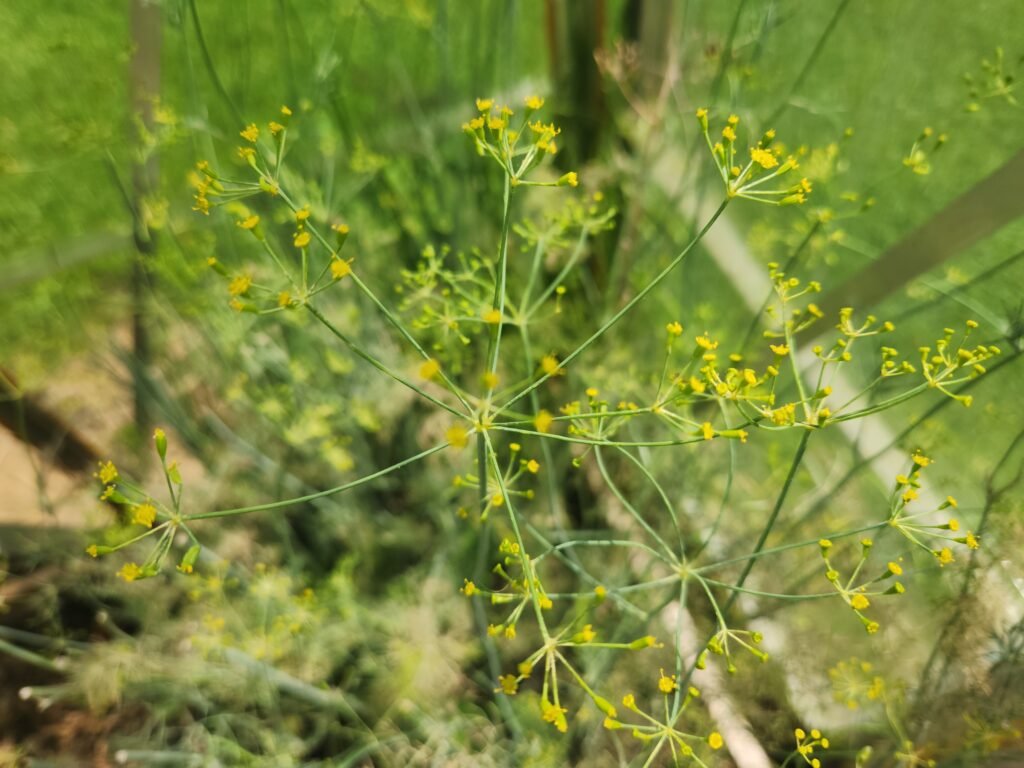
If left on the plant, those flowers will eventually dry out and transform into seeds. This process usually takes one to two weeks after the flowers start fading.
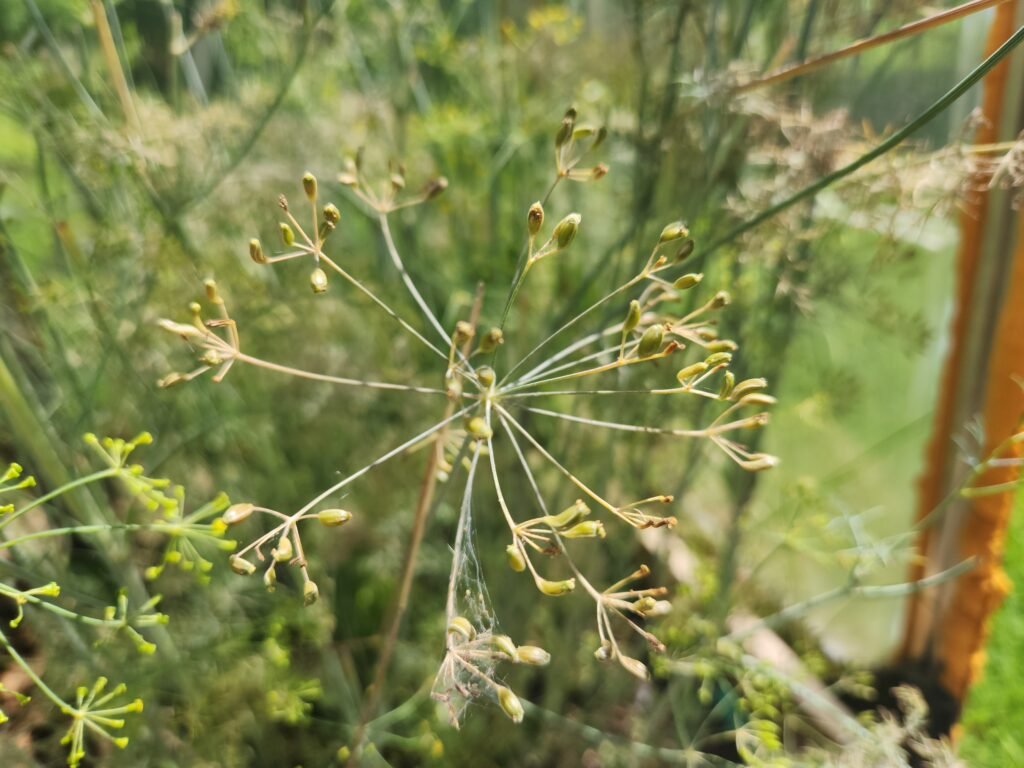
Learn all about how to grow dill from seed in our dill growing guide.
How To Harvest Dill Seeds
When the flower heads begin to dry and seeds start turning brown, it’s time to harvest. The easiest way is to cut the seed heads from the stem and place them in a paper bag to finish drying.
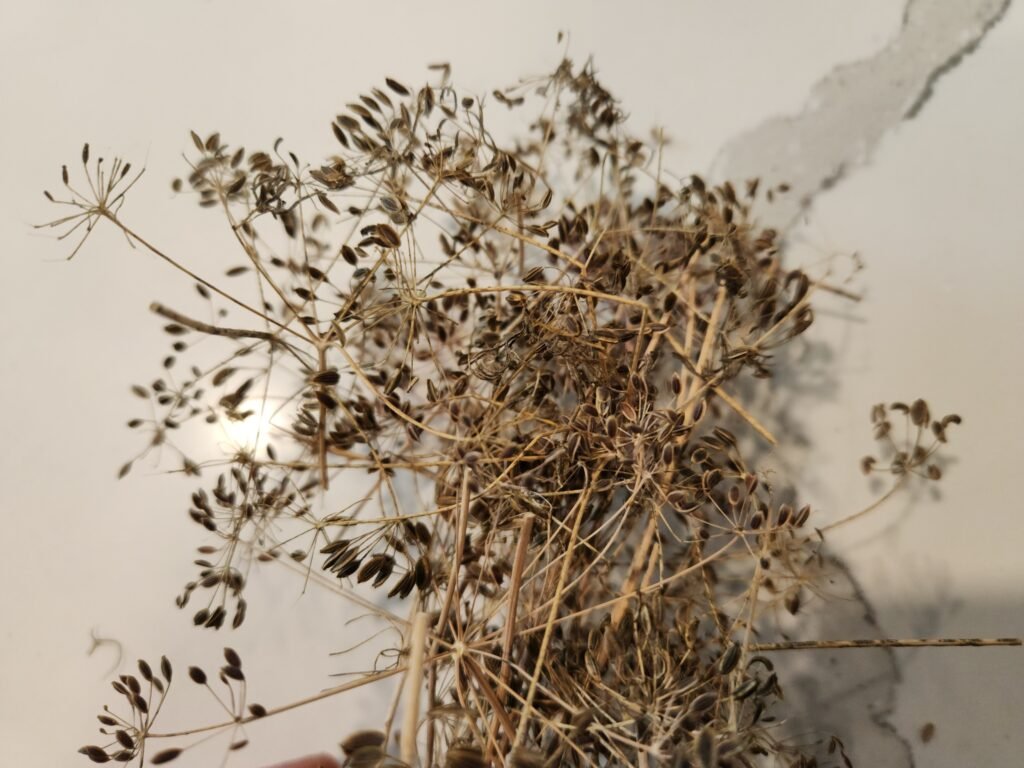
When the seeds are fully dry, use your finger to slide down the stem of the dill to gently remove the seeds from the stem and into a bowl. Each dill plant can produce hundreds of seeds, giving you more than enough to replant next season.
Other easy to save seeds for beginners are tomatoes and basil. Read our how to guides on how to save basil seeds, and how to save tomato seeds for more info.
How Do You Clean Dill Seeds?
During harvesting, you’ll likely end up with bits of stem and chaff mixed in with your dill seeds. The simplest way to clean dill seeds is by winnowing. An old-fashioned but highly effective method.
Winnowing is a commonly used method of removing debris from seeds. Here’s how:
- Setup two bowls and a small fan outside where you won’t make a mess.
- Test the speed setting of the fan by pouring a small portion of the seeds with chaff into the other bowl in front of the fan. It can take some tests to make sure the fan is at the right speed and you are the right distance from it so that only the chaff is blown away. Seeds are heavier than the chaff and will fall into the bowl below and the chaff will blow away.
- Poor the rest of the dill seeds from one bowl into the other in front of the fan.
- Repeat as needed until the dill seeds are all that’s left in the bowl.
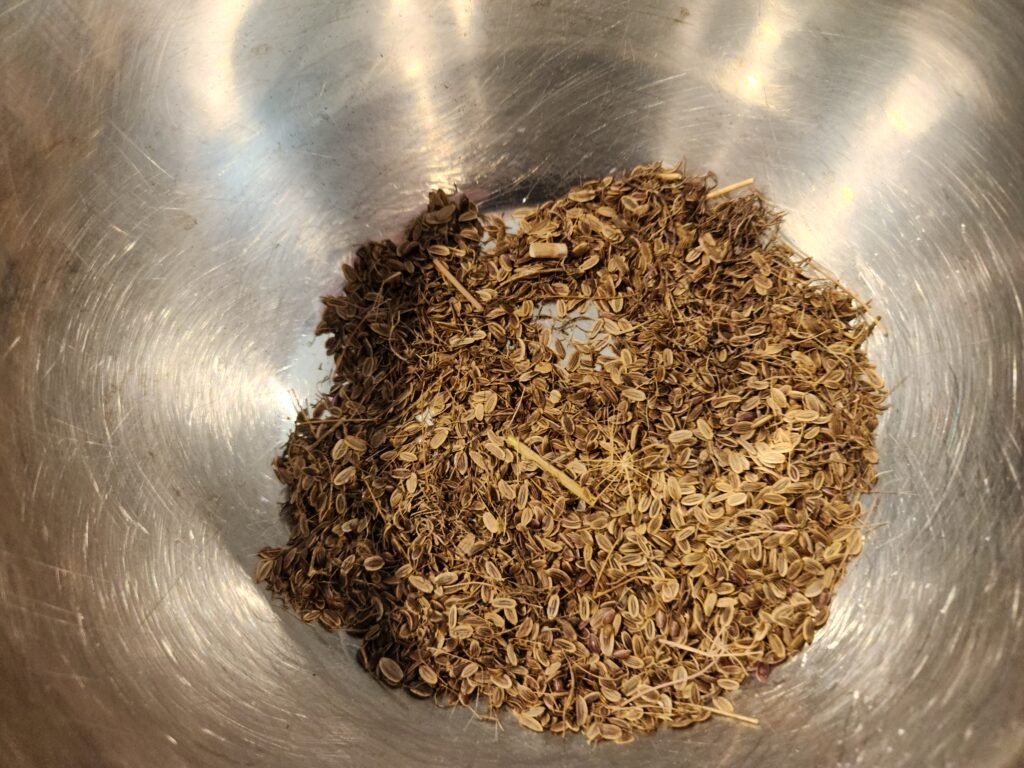
A little bit of chaff left after winnowing a few times it’s OK. You’re not trying to sell these commercially so they don’t need to be perfectly clean.
How To Store Dill Seeds?
Once your seeds are completely dry, transfer them to a clean, airtight container. Glass jars, seed envelopes, or resealable plastic bags all work well.
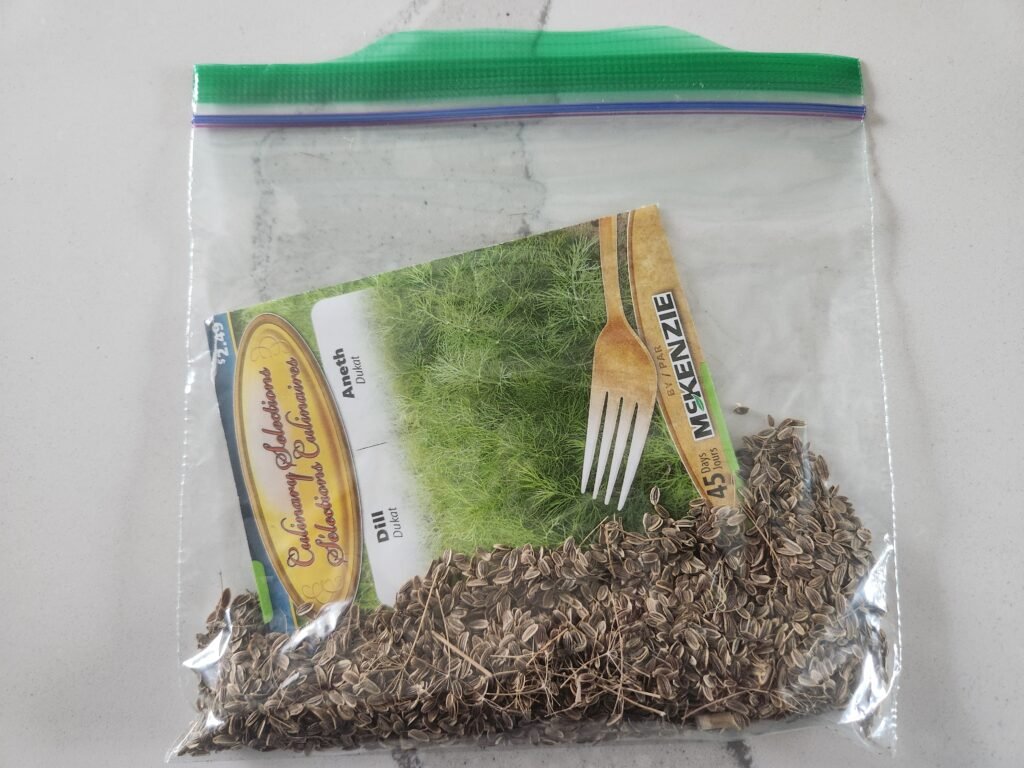
Be sure to label your container with the type of seed and the date. Store in a cool, dark, and dry place—such as a pantry or cupboard. Properly stored dill seeds can remain viable for up to five years.
Extra Tip: Toss a small silica gel packet into the container to absorb any excess moisture and extend seed life.
FAQ: Saving Dill Seeds
Yes. Always make sure your dill seeds are fully dry before storing or planting. Damp seeds can mold or lose viability.
You can, but results may vary. For the best germination rate, allow the seeds to dry first and store them until the next planting season.
With proper storage, dill seeds remain viable for up to 5 years, though the highest germination rates occur within the first 2 years.
Dill seed refers to the mature seeds used for planting or flavoring pickles. Dill weed is the leafy part of the plant, often harvested fresh or dried for cooking.
Absolutely! Dill seeds are edible and often used in pickling, breads, and spice blends. Just be sure they are fully dried before storing for culinary use.
Conclusion
Saving dill seeds is an easy and cost-effective way to ensure a steady supply of fresh, healthy produce. By following these simple steps, you can harvest, clean, dry, and store dill seeds to use for planting in the next growing season. With a little bit of effort and patience, you can become self-sufficient and enjoy the benefits of growing your own dill.
I hope you enjoyed this seed saving guide. If you did make sure you check out the other growing guides, seed saving guides and our recipes. We are growing our website with more articles all the time, and we invite you to grow with us. If you have any questions about dill or would like to share some of your knowledge with us please leave a comment below.

